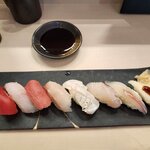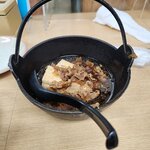Highlights
- Shop Harajuku fashions and experience the high-tech Robot Restaurant in Tokyo
- Take a bike tour of the scenic countryside in Takayama
- Visit temples and shrines and engage in high arts activities in Kyoto
- Stay in a thatched-roof farmhouse in the quaint, historic town of Shirakawa-go
Brief Itinerary
| Day | Highlights | Overnight |
|---|---|---|
| Day 1 | Arrive in Tokyo - Train to Tokyo Station | Tokyo |
| Day 2 | Private, Guided Tour of Tokyo | Tokyo |
| Day 3 | Explore Tokyo on Your Own | Tokyo |
| Day 4 | Garden Tours in Kanazawa | Kanazawa |
| Day 5 | Shirakawa-go - Stay in a Thatched-Roof Farmhouse | Shirakawa |
| Day 6 | Tour the Old Town of Takayama | Takayama |
| Day 7 | Takayama - Cycling Tour of the Countryside | Takayama |
| Day 8 | Gero Onsen - Hot Spring Ryokan Inn With Dinner | Gero Onsen |
| Day 9 | Kyoto - Garden Tours and Local Shopping | Kyoto |
| Day 10 | Kyoto - Private, Guided Tour | Kyoto |
| Day 11 | Kyoto - High Arts Activities | Kyoto |
| Day 12 | Day Trip to Nara | Kyoto |
| Day 13 | Tokyo - Final Night of Evening Entertainment | Tokyo |
| Day 14 | Travel Home |
Detailed Itinerary
Day 1: Arrive in Tokyo - Train to Tokyo Station

Welcome to Japan! Upon landing at Tokyo's Narita Airport, you will be greeted by your friendly airport chaperone who will help you make the trip to your hotel by way of the train. If you are feeling the stress and jetlag of travel, fret not; your guide will have everything you need to help you kickstart your journey. Your guide will:
- Validate your rail pass and assist with train seating reservations.
- Provide you with a convenient Wi-Fi device, so you can stay connected throughout your trip.
- Answer any pressing questions you may have.
The train from Narita Airport to Tokyo Station takes approximately 65 minutes. Once you've checked into your hotel and have had some time to rest, wander Tokyo illuminated at night, and enjoy dinner at one of Tokyo's finest eateries. Feel free to ask your chaperone for recommendations upon arrival. If you prefer something a bit more casual, Tokyo's street food scene is abundant with exciting fare to try!
Day 2: Private, guided tour of Tokyo

Your private, local guide will meet you at your hotel, and together, you will embark on an exciting tour of one of the world's biggest cities. Since this is a private tour, you can customize an itinerary that will include the sites that interest you most. Don't be afraid to share your wishlist with your guide, so you can voice your input.
To start, you can explore Shinjuku, which is home to Japan's own Red Light District, as well as the Samurai Museum, plenty of Izakaya-style pubs and the Golden Gai (pictured above), which invites you to visit an impressive collection of 200 tiny bars.
Next, you can experience Harajuku, known for its extreme fashions and teenage culture. In addition to people-watching, you can shop the local styles in the different boutiques on Takeshita Street.
To balance out a day of modern activities, take a field trip to Asakusa, where you can connect with ancient Japanese roots at Sensō-ji, an iconic Buddhist temple dating back to 628.
Day 3: Explore Tokyo on your own

Today, you are on your own to explore Tokyo. If the cherry blossoms are in full bloom in the springtime, take a walk through Shinjuku Gyoen, a stroll along the Meguro River or a boat ride for views of Chidorigafuchi, where you can enjoy the breathtaking widespread florals. (These gardens are all gorgeous year-round.)
If you are an animal lover, you can take a fun-filled field trip to one of many animal cafés. Along with standard dog and cat cafés, you can plan a more exotic visit to the hedgehog café, HARRY Roppongi, or Café & Bar Owl Village (with locations in Harajuku and Kichijoji).
As sunset approaches, make your way over to Tokyo Tower or the Tokyo Skytree. Both locations host observatories, where you can take in stunning views of this world-renowned city as night falls.
Day 4: Garden tours in Kanazawa

Take the speeding bullet train to Kanazawa, which is a traditional city tucked away in the Hida Mountains of Japan. It is most famous for Kenrokuen Garden, which is regarded as one of Japan's iconic landscape collectives. With several flowering trees, the look changes, depending on the season. Explore the quieter nooks of the scenic grounds, along with the many water viewpoints and bridges.
Once you have fully explored the lush gardens, you can discover Nagamachi, the former samurai district, as well as the Higashi Chaya District, where geisha perform at the local teahouses.
Also known for its offerings of Japanese sake, you can toast the national beverage at one of several landmarks, like Fukumitsuya Sake Brewery. Then, make a pitstop to taste the Kanazawa eats at Omicho Market, where more than 200 food stalls invite visitors to line up for the specialty: rice bowls topped with fresh seafood.
Day 5: Shirakawa-go - Stay in a thatched-roof farmhouse

Shirakawa-go is sandwiched between Kanazawa and Takayama, and has not changed much since the Edo Period, due to its remote location. This now-quiet village–once considered wild and unexplored–is surrounded by mountains and rice fields. The settlement is best known for its gassho-zukuri farmhouses; traditional styles featuring steep, thatched roofs designed to withstand heavy snow. To preserve these houses, the whole village of Shirakawa-go was declared as a UNESCO World Heritage Site in 1995.
You will be spending the night in one of these quaint farmhouses, where you will enjoy a home-cooked meal for dinner. A popular dish to expect in Shirakawa-go is the local suttate, a warm and comforting hotpot dish to complement your relaxing stay.
If you would like to continue exploring the food culture, you will find delicious trends at nearby shops, including soba noodles and caramel popcorn, along with different styles of waffles, teas, and rice cakes.
Chat with a local specialist who can help organize your trip.
Day 6: Tour the old town of Takayama

Takayama's old town is often referred to as "Little Kyoto," as many of its temples and shrines were built by Takayama artisans (who hailed from Kyoto) during the Edo Period.
Set aside some time to explore Sannomachi Street, which withstands time, and is adorned with old homes and various shops. If you would like to take a load off, you can explore the town while being pulled on a rickshaw. Make sure to stop into a local coffee house if you need an afternoon boost, or a sake brewery, where you can purchase different samples native to the area.
Many of the traditional buildings are now museums, where you can discover how the merchants once lived in remote Japan. Take a peek inside Hirata Kinenkan, which is the old home of a candlemaker, as well as the Fuji Art Gallery, which houses antique household items and art objects on display.
Day 7: Takayama - Cycling tour of the countryside

Today, you will take a train to the small town of Hida Furukawa, and will join a small group (with a maximum of eight people) for a guided rural bike tour. You will have everything you need–a bicycle, a helmet, and insurance included–as you cycle through the countryside of Japan. You can expect to ride at a slow pace, and there will be plenty of time to stop and snap photos throughout the tour.
Distance: 13.6 miles
Duration: 3.5 hours
Day 8: Gero Onsen - Hot spring Ryokan Inn with dinner

Gero Onsen is a hot spring town just south of Takayama. According to Confucian master Razan Hayashi, Gero Hot Spring is deemed one of Japan's best-three hot spring areas, along with Arima and Kusatsu. Located in the Masudagawa River valley, there are several baths that you can dip into and enjoy.
Once you are refreshed from your day of soaking, you will spend the night in a Ryokan Inn, where you can enjoy an authentic kaiseki (multi-course) dinner, which showcases a collection of Japanese cooking skills and techniques in one sitting.
After dinner, you are invited for more relaxation at the Inn's onsite hot spring, which is divided by gender. If you prefer a more private experience, you also have access to your own therapeutic hot spring bath.
Day 9: Kyoto - Garden tours and local shopping

Next on the agenda is a visit to Kyoto, home of Japan's ancient imperial capital, which is abundant with history, natural beauty, and culture. Kyoto is known for honoring the Japenese "high arts." Three days of exploration will ensure you experience the full riches of Kyoto.
Get acquainted with stunning outdoor scenes by discovering the many gardens, including:
- Ryoan-ji Temple, Tofuku-ji Temple, Daitokuji Temple, and Kennin-ji Temple, which show off the dry landscapes and Zen gardens.
- Ginkaky-ji Temple, Okochi-Sanso Villa, and Sento Gosho, which are ideal for scenic strolls.
Go for a walk along the canals and charming streets. Take in the local sites, including the traditional wooden houses, which provide a glimpse into how the ancient culture once flourished.
For those looking to shop for souvenirs, Kyoto is also famous for its crafts, including unique textiles, kimonos, and pottery. The two main shopping districts are Kyoto Station and Downtown Kyoto (where you can also explore the famous Nishiki Market, Kyoto's largest traditional food market).
Day 10: Kyoto - private, guided tour

In the morning, your private, local guide will meet you in the lobby of your hotel to show you the best of Kyoto.
This is your chance to see some of Japan's most beautiful and historic temples and shrines in Kyoto! You will begin in the district of Higashiyama—one of the 11 wards in the city—to see the UNESCO-listed Kiyomizudera (pictured above).
Next, you can experience the entertainment district of Gion, which is home to Yasaka-jinja Shrine and the Minamiza Kabuki Theater. Once you've had your fill of the sites, you can take candid photographs of the colorful geisha girls wearing kimonos as they walk the streets together.
Finally, you will head to Kinkakuji, a waterside Zen temple in northern Kyoto. With the top-two floors covered in gold leaf, the historic structure represents the wealthy aristocratic circles of shogun Ashikaga Yoshimitsu's era.
In addition to your tour guide's itinerary, feel free to request any sightseeing preferences on your list.
Day 11: Kyoto - High arts activities

Your final day in Kyoto is a great time to explore the high arts! You can choose between the following activities:
- Indulge in a formal tea ceremony
- Learn how to write Japanese calligraphy
- Take a flower arranging class
- View a samurai demonstration
- Study ninja arts
To fully immerse yourself, you can even get a geisha or samurai makeover and revisit the Gion area, which is at its most atmospheric in the early evening, under the light of lanterns.
Day 12: Day trip to Nara

In the morning, you will embark on a solo adventure to Nara Station on a 45-minute train ride.
Surrounded by scenic mountains in the countryside, Nara was the imperial capital from 710 until 784, before it was moved to Heijo-kyo (now called Kyoto). During this significant period in history, a large number of Buddhist shrines and temples were erected under the protection of the imperial family and their fellow aristocrats. However, the resident monks in the surrounding hills gained too much influence and eventually tried to seize power from the Shinto emperor. The decision was then made to move the capital to Kyoto.
Many of the temples were built at the height of Nara's power, and are currently registered as UNESCO World Heritage Sites. You can begin your journey to the temples at Todaiji (Great Eastern Temple), which is famous for its main hall, the Daibutsuden. One of the biggest wooden buildings in the world, it houses one of Japan's largest bronze statues of Buddha, measuring nearly 50 feet tall!
Next, you can explore the grounds of Horyuji, one of the oldest surviving wooden structures, which is guarded by the two oldest statues of Kongo Rikishi. The temple is broken into three areas: the Eastern Precinct and the Western Precinct, with the Gallery of Temple Treasures standing between them.
You can end your day with a visit to Nara Park to watch hundreds of deer roaming free. Considered messengers of the gods, the deer are regarded as a natural treasure here and symbolize the city.
Day 13: Tokyo - Final night of evening entertainment

On your bullet train ride back to Tokyo for the evening, make sure to look out for the monumental Mt. Fuji! Since this is your last night in Japan, make it one to remember. Take a nighttime adventure to the Shinjuku area's Robot Restaurant, where you can enjoy high-tech entertainment featuring robots and neon laser lights while you dine. Always evolving and up-to-date with the latest innovations, the 90-minute performance is a once-in-a-lifetime treat.
Day 14: Travel home

It is time to pack up and say farewell to Japan. Take the train from Tokyo to Narita Airport, or a bus to Haneda Airport, to fly home with a head–and heart–overflowing with memories of the Land of the Rising Sun. Otsukaresama desu!








